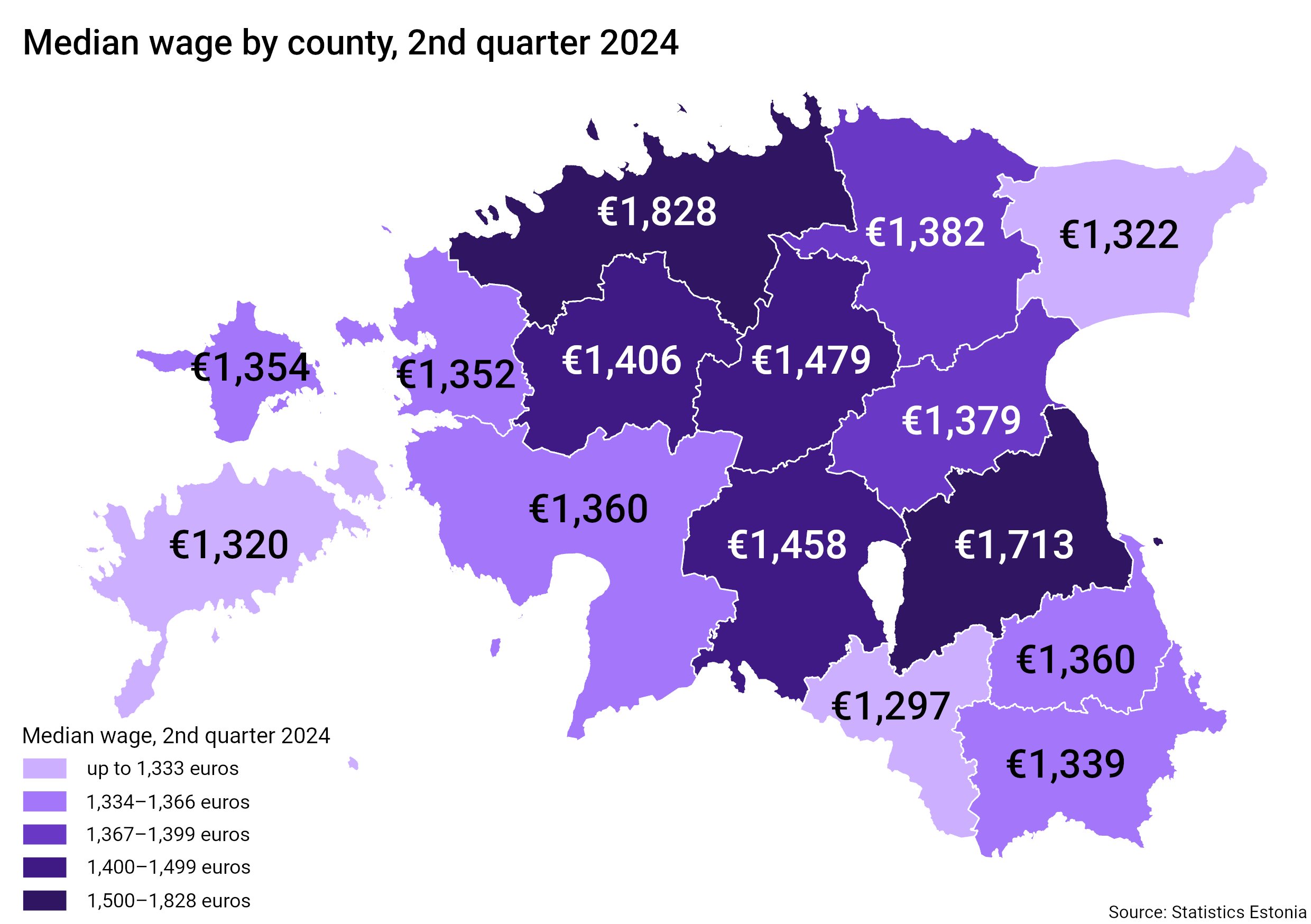Average wages and salaries were €2,007 in Q2
According to Statistics Estonia, the average monthly gross wages and salaries in the second quarter of 2024 were €2,007, which is 7.2% higher than in the same quarter the year before. The median wages were €1,641 in the second quarter of this year and €1,524 in the same quarter of 2023.
“Although the average monthly gross wages and salaries were higher in the second quarter than in the first, wage growth has been slowing for the past four quarters. This is clearly shown by the data for the second quarter of this year as well,” noted Eveli Voolens, team lead of social statistics at Statistics Estonia.
Average monthly gross wages and salaries and their change, 2nd quarter 2023 – 2nd quarter 2024
| Year | Quarter | Average monthly gross wages and salaries, euros | Change on previous year, % |
| 2023 | I | 1,741 | 13.3 |
| II | 1,872 | 12.4 | |
| III | 1,812 | 10.4 | |
| IV | 1,904 | 9.7 | |
| 2024 | I | 1,894 | 8.8 |
| II | 2,007 | 7.2 |
Voolens stated that the average monthly gross wages and salaries were the highest in information and communication (€3,468), financial and insurance activities (€3,163), and electricity, gas, steam and air conditioning supply (€3,138).
The lowest average monthly gross wages and salaries were seen in accommodation and food service (€1,262), other service activities (€1,314), and real estate activities (€1,396). “Compared with the second quarter of last year, the largest increases in wages were recorded in human health and social work activities, but also in other service activities,” she pointed out.
The average monthly gross wages and salaries were the highest in Tallinn (€2,339), followed by Harju county (incl. Tallinn) with €2,233, and Tartu (€2,039). The lowest average wages were seen in Valga (€1,509), Hiiu (€1,525), and Saare (€1,535) counties.
“While wages and salaries are indeed below the national average in most Estonian counties, they are still rising. In comparison with the same time last year, wages have increased the most in Ida-Viru (9.4%), Hiiu (8.6%), and Valga (8.5%) counties,” the analyst said.
Median wages, i.e. the point at which half of employees earn more and half earn less, were €1,641 in the second quarter of 2024. The highest median wages were seen in Tallinn (€1,899), followed by Harju county (incl. Tallinn) with €1,828, and Tartu county (€1,713). Median wages were the lowest in Valga (€1,297), Saare (€1,320), and Ida-Viru (€1,322) counties.
Since the first quarter of 2023, Statistics Estonia uses data from the employment register of the Tax and Customs Board and the income and social tax declarations to publish the average wages and salaries. People working under employment contracts, the Civil Service Act*, and service contracts are included.
* Excluding employees in the areas of governance of the Ministry of Defence and the Ministry of the Interior.
More detailed data have been published in the statistical database.
See also the dedicated section on wages and salaries and labour costs.
When using Statistics Estonia’s data and graphs, please indicate the source.
For further information:
Heidi Kukk
Media Relations Manager
Marketing and Dissemination Department
Statistics Estonia
Tel +372 625 9181
press [at] stat.ee (press[at]stat[dot]ee)
